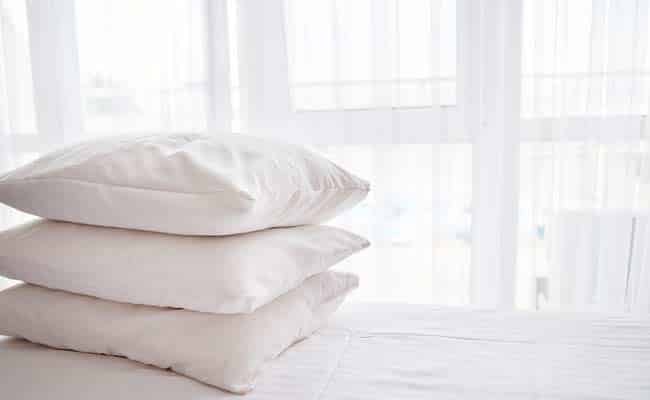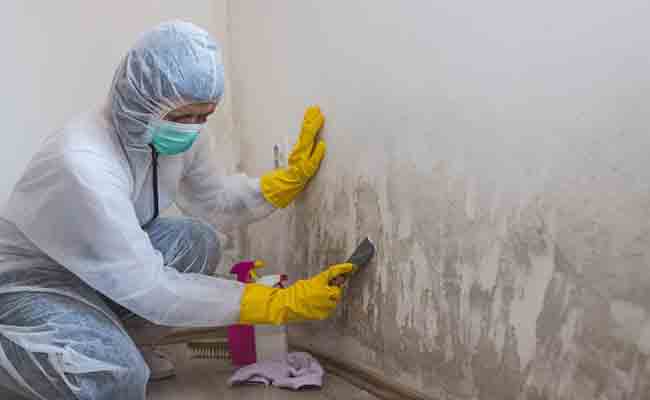How To Take Care Of Your Newly Bought Buckwheat Pillow
Hello friends how are you all? Today we are going to talk about How To Take Care Of Your Newly Bought Buckwheat Pillow? Getting quality sleep is one of the most important factors to a healthy lifestyle. However, there are so many things that can affect how much rest you can get. Stress, comfort, noise, poor mental health, and even temperature might make it difficult to sleep well.
However, there are some ways to help you sleep better, like getting comfortable bed sheets, drinking tea to relax, or even replacing your pillows. Buckwheat pillows have been around for so long, and it might be because of how practical and comfortable they are to sleep on.
Taking Care Of Your Buckwheat Pillow
Switching to buckwheat pillows is easy, but its care and maintenance are different from other pillows. Nonetheless, once you get to know what can and can’t be done, it’s easy sailing from there. Here are some things to tips to help you out:
Read Care Instructions
A Sobakawa or buckwheat pillow can be sold by different stores and brands. Most of the time, each kind will have its care instructions on the label when you purchase it. Take the time to read these and examine any logos or warning signs.
Keep an eye out for details like whether the pillowcase can be machine-washed or what temperature the water should be when washing. If there are care instructions for the hulls, it will help to set them aside and read them carefully.
This buckwheat pillow in the video has a bamboo outer case and a cotton inner, which are machine washable.
Wash The Pillow Case
When it comes to things in your bedroom that can house contaminants and germs, pillows are one of them. They will get dirty, no matter how careful you are. It comes into contact with your skin and hair, which deposits all kinds of oils into the fabric. This can create the perfect breeding ground for mold, bacteria, and viruses to grow and multiply. Even a neck roll pillow, which comes into contact with your nape, needs to be washed because it can absorb a lot of sweat.
For a buckwheat pillow, you’ll need to wash the outer and inner pillowcase according to the wash instructions. It’s essential that you don’t throw the entire pillow, with the buckwheat hulls, into the washer. Separate the hulls, and wash the fabric casing with cold water so that they don’t shrink.
Air Dry the Pillow Case
While it might be tempting to throw the pillowcases in the washer, it’s best to hang them up to air dry. However, if the label says you could use the dryer for the cases, it’s probably safe. If it isn’t indicated, it’s safer to just air dry them. When hanging them to dry, choose a place that gets sunlight and air. This way, it smells good and dries quickly.
Use Another Pillow Case
Depending on where you get your buckwheat pillow, you’ll probably receive two pillowcases. One is the inner casing, which holds the buckwheat hulls together, and the second one is the outer casing. It’s a good idea to purchase other cases for your buckwheat pillow so you could switch them out regularly. While you’re washing your pillowcases, you could still use your buckwheat hulls to sleep comfortably.
Don’t Put the Hulls In The Washer
As mentioned, you can’t throw the entire pillow with the buckwheat inside in the washing machine. But it’s not because you can’t machine wash them. You can’t get the hulls wet because it can ruin them.
If you want to clean up the hulls, you can pour them on a tray. Air them out and put them in a sunny spot. You can stir and turn them over in an hour or two with your hands, too. Buckwheat hulls dry quickly, so you can probably do this once every week or only when necessary.
Keep The Hulls Dry
Now that you know that you can’t soak the hulls in the water, it would also help to avoid spilling on the pillow. It’s understandable that some accidents might happen, especially if you like to use your buckwheat pillow outside of the bedroom. Investing in a waterproof outer pillowcase can help keep the buckwheat hulls dry. This way, it could last through its indicated lifespan.
Dry Out Wet Hulls Immediately
In case you accidentally get the hulls wet, it’s essential to act quickly. Please take out the wet hulls and separate them from the dry ones. Set them out on a tray to air dry, and make sure to do a touch test before you put them back in your pillow. If they’re still damp, wait a little longer for them to dry out.
Check The Hulls Regularly
Another thing you’ll have to do is to check the hulls regularly. This is because hulls can eventually flatten out, primarily if you use them a lot. Buckwheat pillows can last for 10 years, but it also depends on how well you care for them. If you feel like the pillow has deflated or doesn’t provide as much support as it used to, some of the hulls have probably broken down and flattened out.
Replace The Buckwheat Hulls
When the hulls have flattened out or have become ruined, you can replace the hulls. You could buy the hulls separately so you could refill your existing pillow. You could even have buckwheat hulls in storage so that you could replace them when necessary.
However, when you have buckwheat hulls in storage, please keep them in an airtight container. A dry place would also be better so that it doesn’t absorb moisture and ruin it. This can also prevent mold from growing on the new hulls.
Replacing the hulls is more affordable and eco-friendlier than throwing out an entire polyester pillow and replacing them. Considering how short the lifespan of polyester pillows is, you’ll probably end up replacing them so many times in 10 years. On the other hand, a buckwheat hulls pillow will only need filling replacements when you need it.
Be Careful With The Hulls
When you wash the pillowcases, you’ll have to be careful with handling and transferring the hulls. Because the hulls are tiny, it can be challenging to clean them up when you spill them all over the place. A good tip is to put a paper bag over the unzipped pillow and pour it into it carefully. If you don’t have a paper bag, you can also use a large bowl.
Inspect The Cases for Tears
Another thing to look out for is damage to your pillowcases. Any tears or loose stitching can cause the hulls to scatter everywhere. It’s best to get high-quality pillowcases or reinforce the hem so that it can hold the hulls securely.
Use Pillow Cases with Zippers
There are tons of pillowcases in the market that are open. These are usually made for polyester, foam, and feather pillows and not for buckwheat hulls. Getting pillowcases with a zipper can provide you that extra security, so even if the inner pillowcase gets unzipped or damaged, it can still hold the hulls inside.
Use A Dehumidifier
If there’s excessive moisture in the air, it can cause problems with your pillow. Using a humidifier from time to time is okay. But if the environment is moist all the time, the hulls can absorb it. This can ruin the hulls and cause bacteria or even molds to grow on the pillow or hulls. Keeping a large dehumidifier in your room can be helpful, but you could put some non-toxic moisture absorbing packets in the pillowcase, too.
Don’t Worry About The Earthy Smell
When you get a brand-new buckwheat pillow, it can have an earthy or nutty smell. This might be pleasant to some, but others might not be too fond of it. Try not to spray it with perfume or detergent sprays because it’s essential to keep the hulls dry. Eventually, the smell will disappear on its own.
Ask Questions

Buckwheat pillow companies are aware that not many people know how to wash and care for the materials used for their products. As a customer, it would be helpful to communicate and ask questions before purchasing your pillow. Even after you’ve bought a pillow, it wouldn’t hurt to contact them about any problems or questions you have.
What Are Buckwheat Hulls?
Buckwheat hulls are the fillers used for these pillows. When the buckwheat plant’s seeds are harvested, the seeds are separated from the hulls. The seeds are considered healthy and gluten-free pseudo-cereal.
However, the hulls, once separated from the seeds, also have their own uses. They’re used for pillows, lumbar supports, and other cushions. Being organic, it’s a fantastic choice for people who live an eco-friendlier lifestyle. This is because polyester fillings that come from textile industries contribute to environmental problems.
Buckwheat hulls are organic materials that are used to fill up cushions and pillows. In history, buckwheat hulls were used 600 years ago in Japan. They used it to fill up pillows, cushions, and bedding. It’s no surprise that it’s still used today for the same purposes.
Pros And Cons of Buckwheat Pillows
With so many kinds of pillows in the market, there are still questions about why buckwheat pillows are any different. Like most products, there are pros and cons to Sobakawa pillows, and knowing more about them can help you decide and understand better.
Advantages:
- Reduces snoring
- Helps improve posture
- Lasts a long time
- Adjustable thickness
- Natural and organic
- Keeps the user cool
- Adjusts to your neck and head
- Considered to be hypoallergenic
Disadvantages:
- Can have rustling noises
- Might be too firm for some
- Hulls cannot be washed
More About Its Health Benefits
Did you know that there are certain things about how you sleep that could be making you sick? For one thing, your posture while you lay down could be responsible for any aches or respiratory problems you’re experiencing.
Buckwheat Pillows Help with Posture
When it comes to sleeping, the pillow is something that could help you relax or make you feel uncomfortable. It’s an essential investment as it can affect your entire day. A good night’s sleep will help you function better and be more productive. If your pillow is uncomfortable then, you might end up with aches and pains all day long.
Because buckwheat pillows are adjustable, you can modify the thickness to your needs. Simply by moving the hulls and rolling the pillowcase, you could make the pillow thicker and denser. If not, you could simply add more hulls into the pillowcase to increase its height. If you’re a stomach sleeper, you could reduce hulls to avoid keeping your head and neck at an uncomfortable angle.
Buckwheat Pillows Helps You Breathe
Another reason that this type of pillow is said to be a healthier choice is that it’s hypoallergenic. It also doesn’t collect moisture like a polyester pillow. These regular pillows are said to last from six to 12 years, but imagine how much dirt is growing inside them. Your face touches your pillow for long periods, and it can cause breakouts and allergies if it isn’t clean.
Although it’s easy to throw a polyester or foam pillow in the washing machine, it does flatten out. When you finally dry out the pillow, it doesn’t provide as much support as before. So, you’ll probably have to buy a new one, which can be expensive. On the other hand, you won’t have to worry about dirty and allergens growing on your buckwheat hulls as long as you air them out and keep them dry
Conclusion
When it comes to caring for your buckwheat pillow and ensuring that it lasts for a long time, keeping it dry is one rule to remember. You can wash the casing, but the hulls have to be aired out. Furthermore, you might also want to replace the hulls if it feels like it’s flattened out, as it’s normal for an organic matter like buckwheat hulls to break down eventually.




